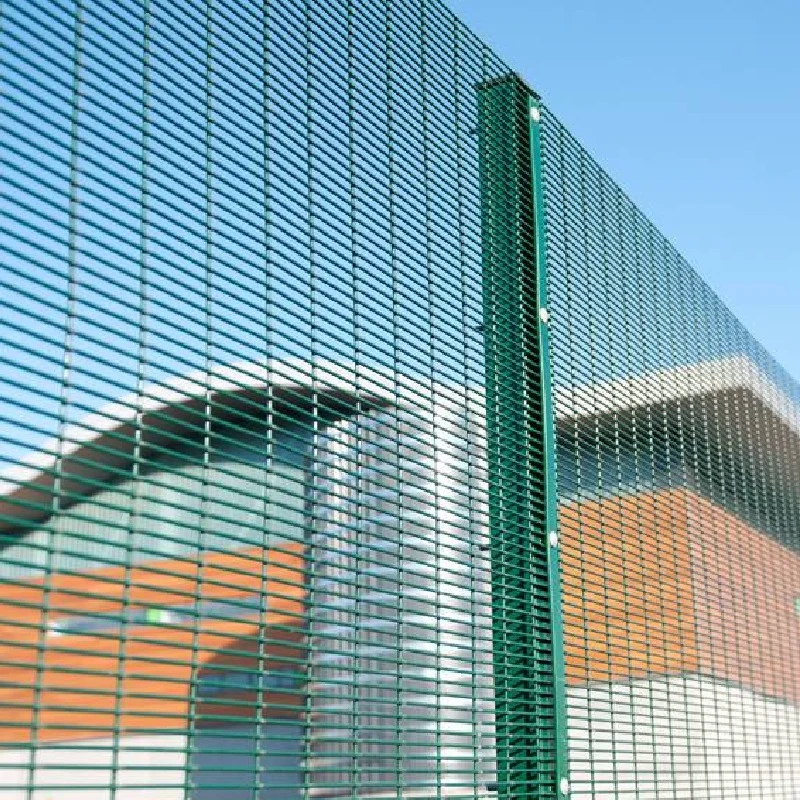Dec . 15, 2024 22:03 Back to list
Innovative Applications of Welded Wire in Concrete Reinforcement Solutions for Construction Industry
The Importance of Concrete Welded Wire in Modern Construction
Concrete welded wire fabric, commonly referred to as welded wire, has become an integral component in the construction industry. This innovative material combines strength, versatility, and cost-effectiveness, making it a popular choice for a variety of applications, from residential buildings to large-scale infrastructures.
What is Concrete Welded Wire?
Concrete welded wire consists of a series of pre-welded steel wires that form a grid pattern. The wires are typically made from low carbon steel and are welded at the intersections, ensuring robustness and stability. The fabric is usually available in different sizes, gauges, and mesh configurations, allowing for a wide range of applications. This versatility makes it suitable for both load-bearing structures and aesthetic components in construction.
Benefits of Using Welded Wire in Concrete
1. Enhanced Structural Integrity One of the primary reasons for using concrete welded wire is its ability to improve the structural integrity of concrete. When embedded in concrete, welded wire provides uniform reinforcement, which helps control cracking and increases the overall strength of the structure. This is especially important in areas with high stress or fluctuating temperatures.
2. Cost-Effectiveness Compared to traditional rebar systems, welded wire fabric can be more cost-effective. It is easier to handle and install, which can significantly reduce labor costs. Additionally, the material itself can often be more affordable, making it an attractive option for budget-conscious builders.
3. Time Efficiency The installation process for concrete welded wire is typically faster than that of individual rebar, as it comes pre-assembled in sheets or rolls. This eliminates the need for tying individual bars together, resulting in quicker project turnaround times. In a competitive construction environment, the ability to save time can translate into significant savings.
concrete welded wire

4. Reduction of Material Waste Using welded wire can also help reduce material waste. Since the wire fabric is manufactured to precise specifications, builders can use it with minimal offcuts. This not only lowers costs but also supports sustainable building practices, as less waste leads to fewer environmental impacts.
5. Versatility in Applications Concrete welded wire can be utilized in various projects, including slabs, pavements, walls, and foundations. Its adaptability allows builders to use it in both residential and commercial buildings, as well as in agricultural structures and public works like bridges and tunnels.
Applications in Construction
Welded wire fabric is widely used in several construction applications. In residential settings, it is commonly employed for floor slabs and driveways, providing essential reinforcement to withstand loads and resist cracking. In commercial buildings, it is utilized for wall panels and precast concrete products.
Moreover, in roadway construction, welded wire can be integrated into pavement slabs to enhance durability and reduce maintenance costs. The use of welded wire in infrastructural projects, such as bridges and highways, not only improves safety but also extends the service life of these critical assets.
Conclusion
Concrete welded wire has revolutionized the construction industry through its unique blend of strength, versatility, and cost efficiency. By providing superior reinforcement for various applications, it has become an essential material for builders and engineers alike. As construction demands continue to evolve, the role of concrete welded wire will undoubtedly expand, paving the way for safer and more sustainable structures. As industry standards grow increasingly rigorous, the adoption of welded wire fabric will play a crucial role in meeting these demands while promoting efficient and environmentally friendly construction practices.
In summary, whether in residential homes or massive infrastructure projects, the importance of concrete welded wire cannot be overstated. Its contribution to enhancing structural performance and durability makes it a vital resource in creating the resilient buildings and roads needed for a modern world. As construction technology progresses, we can expect to see further innovations and uses for this essential material, solidifying its place in the future of construction.
-
Reinforcing Mesh: Core Material of the Construction Industry
NewsJul.07,2025
-
Welded Wire Fabric Reinvented for Modern Projects
NewsJul.04,2025
-
Superiority of Stainless Steel Woven Mesh
NewsJul.04,2025
-
Key Types of Razor Wire and Their Applications
NewsJul.04,2025
-
Durable Metal Fence Types for Security
NewsJul.04,2025
-
Best Materials for Livestock Fence
NewsJul.04,2025
products.







